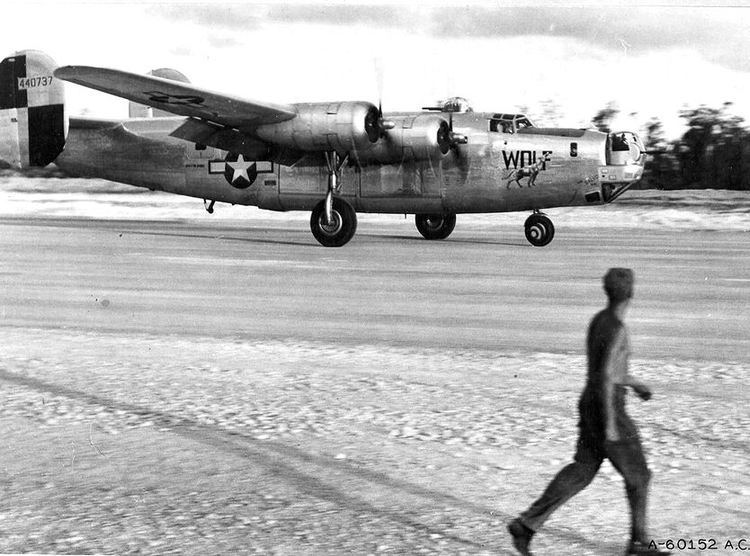Country United States | ||
 | ||
Active 1917–1918; 1940-1946; 2012-present Branch United States Air Force Role Unmanned Reconnaissance Garrison/HQ Creech Air Force Base, Nevada Engagements American Theater of World War II
Pacific Theater of Operations | ||
The 867th Reconnaissance Squadron is an active United States Air Force unit. It was activated at Creech Air Force Base, Nevada on 4 June 2012 as a remotely piloted aircraft squadron.
Contents
The squadron was first active during World War I as the 92d Aero Squadron. It deployed to England in October 1917 and conducted training with the Royal Air Force, but saw no combat. It returned to the United States at the end of 1918 and was demobilized.
Activated as the 17th Reconnaissance Squadron several months before the American entry into World War II, the squadron performed in the antisubmarine, while changing its designation every few months. When the United States Navy assumed full responsibility for the antisubmarine campaign in 1943, it became the 867th Bombardment Squadron and provided the cadre for a new Consolidated B-24 Liberator group. The squadron moved to the Pacific and entered combat against Japan, serving to the end of the war.
World War I
The squadron was first established in the summer of 1917 as the 92d Aero Squadron (Service), a World War I Air Service squadron at Kelly Field, Texas. The squadron trained with the Royal Flying Corps (later the Royal Air Force )in England, but never served in combat on the Western Front. The squadron returned to the United States in December 1918 and was demobilized.
World War II
The 17th Reconnaissance Squadron was activated in early 1941 as a reconnaissance squadron attached to the 45th Bombardment Group, a light bomber unit assigned to the Southeast Air District at Army Air Base Savannah, Georgia. Its initial mission was to support Army units at Fort Stewart in maneuvers, however it moved to New Hampshire in June 1941. In August, redesignated as the 92d Bombardment Squadron when the Air Corps converted its reconnaissance squadrons in light bombardment units to bombardment squadrons. The squadron flew convoy patrols over the New England coast to the Grand Banks of Newfoundland during the summer of 1941, protecting Lend-Lease shipments of supplies and equipment to England.
After the Pearl Harbor Attack the squadron was reassigned to antisubmarine duty along the southeast Atlantic coast. It converted to medium bombers and returned to the reconnaissance designation briefly, this time as the 92d Reconnaissance Squadron but became the 433d Bombardment Squadron when the Army Air Forces converted its remaining bomber reconnaissance units to bombardment squadrons. As part of Army Air Forces Antisubmarine Command it performed full-time antisubmarine patrols along the east coast as the 10th Antisubmarine Squadron with squadron headquarters on Long Island, with detachments operating as far away as Miami and New Orleans. Non-Operational after August 1943 when antisubmarine duty was reassigned to the United States Navy.
The squadron moved to Gowen Field, Idaho where it provided the cadre for newly forming Consolidated B-24 Liberator heavy bomber units as the 867th Bombardment Squadron. Squadron personnel formed the core of the newly established 494th Bombardment Group, moving first to Wendover Field, Utah, and later to Mountain Home Army Air Field, Idaho to complete its final phase of training. At Mountain Home, the squadron received new very long range B-24J aircraft in early May.
The 867th deployed to Hawaii where it became part of VII Bomber Command. It remained in Hawaii with aircraft undergoing modifications while training for long range flights over the Pacific Ocean. The unit deployed to Angaur Airstrip in the Palau Islands in October, flying very long range combat missions against Japanese airfields on Yap and Koror. The squadron conducted strikes on other bypassed enemy installations in the Pacific and against the Japanese in the Philippines. Late in 1944 hit gun emplacements, personnel areas, ant storage depots on Corregidor and Caballo at the entrance to Manila Bay. It bombed radio installations and power plants at Japanese bases in the Philippines and attacked enemy-held airfields, including Clark Field on Luzon. Early in 1945 it struck airfields on Mindanao and ammunition and supply dumps in the Davao Gulf and Illana Bay areas.
The 867th moved to Okinawa in June 1945. Engaged primarily in attacks against enemy airfields on Kyūshū until V-J Day. The squadron also participated in incendiary raids, dropped propaganda leaflets over urban areas of Kyūshū and struck airfields in China, in southern Korea, and around the Inland Sea of Japan.
After the war's end in September, the unit remained on Okinawa as older units began to demobilize. The squadron was engaged in transporting personnel and supplies in the Southwest Pacific, and moving necessary occupation support elements from Manila to Tokyo. Began to demobilize in November and December, with personnel returning to the United States; inactivated as a paper unit in the United States on 4 January 1946.
Lineage
92d Aero Squadron
867th Reconnaissance Squadron
Assignments
Awards and Campaigns
Manual campaign table
